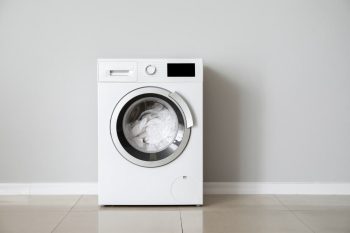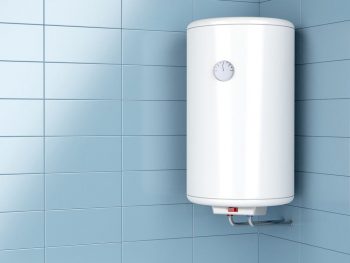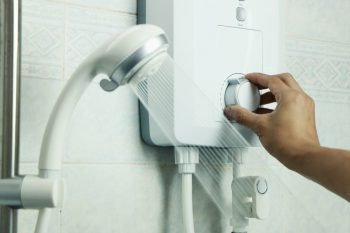
Cleaning your Samsung dryer is a task that may seem mundane but is absolutely necessary for the efficiency and longevity of your appliance. Regular maintenance not only ensures that your dryer operates at its best but also helps to prevent potential fire hazards. In this comprehensive guide, we’ll walk you through the process of cleaning your Samsung dryer, from the lint filter to the drum, the exterior, and even the vent.
To clean a Samsung dryer, start by turning off the dryer and cleaning the lint filter and trap. Then, unplug the dryer and clean the drum with a solution of dishwashing liquid and warm water. Dry the interior and leave the door open for fumes to dissipate. Next, clean the exterior vent cover and opening using a vacuum cleaner and a cloth. For any performance issues, check the dryer settings, clean the lint filter and housing, inspect the dryer vent, ensure proper power supply, examine the heating element, check the thermal fuse, and inspect the dryer’s ventilation system.
Why Clean Your Samsung Dryer?
Cleaning your Samsung dryer regularly can help maintain its optimal performance. The lint filter should be cleaned before or after every load, and the dryer vent should be cleaned at least once a year. However, if you have a large family, use the dryer frequently, or wash bulky items like blankets and towels, it is recommended to clean the dryer vent more often, such as every six months.
Tools and Cleaning Agents Needed
To clean a Samsung dryer, you’ll need the following:
- A pipe cleaner for the lint filter compartment
- A damp cloth and a mild, non-abrasive cleaner for the drum
- A soft, damp cloth for the control panel and exterior
- The provided cleaning brush or a vacuum cleaner with a brush attachment for the heat exchanger (for heat pump smart dryers)
Cleaning the Lint Filter and Trap
The first step in maintaining your dryer is cleaning the lint filter and trap. Not only does this help the dryer run more efficiently, but it also reduces the risk of fire.
- Turn off the dryer and open the door.
- Remove the lint filter from inside the drum.
- The lint filter separates at the top. Press down on the latch and open it.
- Remove the lint from the filter.
- If the lint filter appears clogged, you can also run it under cold water.
- Close the lint filter and return it to its slot.
- For a more thorough cleaning, use a pipe cleaner to clear out the lint filter compartment.
Cleaning the Dryer Drum and Exterior
Next, let’s move to the drum and exterior of your Samsung dryer.
Cleaning the Drum
- Unplug the dryer.
- Mix a solution of dishwashing liquid and warm water in a bucket.
- Dip a microfiber cloth in the soapy solution and wring until it is not dripping.
- Wipe down the drum to remove dirt and residue that may have accumulated.
- Treat any areas stained with ink, grease, lipstick, or melted crayon.
- Dry the interior with another microfiber cloth.
- Leave the dryer door open for at least 30 minutes to allow any fumes to dissipate before using the dryer.
Cleaning the Exterior
- Remove the exterior vent cover.
- Use a vacuum cleaner with a hose attachment to clean the vent opening and surrounding area.
- If the vent cover is soiled with dust and dirt, mix a few drops of dishwashing liquid in warm water and use a cloth to clean it.
- Lubricate the vent hinges with WD-40 or another type of lubricant if they are seized.
- Use a long-handled, wire brush or a dryer vent cleaning brush to remove any lint or debris from the vent.
Troubleshooting Samsung Dryer Performance Issues
If your dryer isn’t performing optimally even after cleaning, you can try the following troubleshooting steps:
- Check dryer settings: Ensure you have selected the appropriate settings for your load, such as the correct dry cycle and temperature.
- Clean the lint filter: Remove the lint filter, brush off any lint, and clean it thoroughly with an old toothbrush, hot water, and dish detergent.
- Clean the lint filter housing: Remove any lint buildup in the housing using a vacuum cleaner or a lint brush.
- Inspect the dryer vent: Check the dryer vent tube for any obstructions, such as lint buildup, and clean it if necessary.
- Ensure proper power supply: Check if the dryer is properly plugged in and if the circuit breakers are functioning correctly.
- Examine the heating element: If your clothes are not getting warm, the heating element might be faulty and may need to be replaced.
- Check the thermal fuse: A faulty thermal fuse can cause the dryer to not heat up. If it’s broken, it will need to be replaced.
- Inspect the dryer’s ventilation system: Ensure the ventilation system is clear of any obstructions, such as lint or debris, to improve airflow.
If all else fails, it’s advisable to seek assistance from the manufacturer or a professional technician who can further diagnose and repair any technical issues.
Conclusion
Maintaining your Samsung dryer is not a difficult task if you follow these steps. Regular cleaning ensures that your dryer remains clean, efficient, and safe to use. So, don’t wait until your dryer starts showing signs of inefficiency. Start your regular maintenance today and enjoy a smoothly running appliance that serves you well for years to come.
Frequently Asked Questions
How often should I clean the lint filter?
The lint filter should be cleaned before or after every load. This helps the dryer run more efficiently and reduces the risk of fire.
What tools do I need to clean my Samsung dryer?
To clean a Samsung dryer, you’ll need a pipe cleaner for the lint filter compartment, a damp cloth and a mild, non-abrasive cleaner for the drum, a soft, damp cloth for the control panel and exterior, and the provided cleaning brush or a vacuum cleaner with a brush attachment for the heat exchanger (for heat pump smart dryers).
Can I use any detergent to clean the drum?
It’s recommended to use a mild, non-abrasive cleaner or a solution of dishwashing liquid and warm water to clean the drum.
What should I do if my dryer isn’t performing optimally even after cleaning?
You can try troubleshooting steps such as checking dryer settings, cleaning the lint filter and its housing, inspecting the dryer vent, ensuring proper power supply, examining the heating element, checking the thermal fuse, and inspecting the dryer’s ventilation system. If these steps do not resolve the issue, it’s advisable to seek assistance from the manufacturer or a professional technician.
What should I do if the vent cover hinges are seized?
If the vent cover hinges are seized, you can lubricate them with WD-40 or another type of lubricant.












